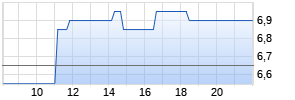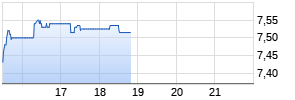
Outcome of the Lake Charles Chemicals Project Review
PR Newswire
JOHANNESBURG, August 23, 2016
JOHANNESBURG, August 23, 2016 /PRNewswire/ --
On 6 June 2016, Sasol announced the preliminary findings of the detailed review of the Lake Charles Chemical Project (LCCP), which was initiated in March 2016. The review has been completed, and involved a verification of the details and quantities of approximately 60 000 individual line items, based on actual costs, detailed engineering, benchmarking against other projects as well as actual field construction productivity factors. These factors were then combined with the updated execution strategy to prepare an updated project cost and schedule. An independent third party review of the estimate has also been carried out.
The LCCP consists of a world-scale 1,5 million ton per year ethane cracker, and six downstream chemical units - two large polymers plants (low-density and linear low-density polyethylene) and an ethylene oxide/ethylene glycol plant, which together will consume around two thirds of the ethylene produced by the cracker; and three smaller, higher-value derivative plants, which will produce specialty alcohols, ethoxylates and other products. The project is under construction near Lake Charles, Louisiana in the USA, adjacent to Sasol's existing chemical operations.
The detailed review has confirmed that the total capital cost for the project is expected to be US$11 billion, which includes site infrastructure and utility improvements. This is an increase of $2,1 billion from the original estimate at the time of final investment decision (FID) in October 2014. This estimate includes a contingency, which measured against industry norms for this stage of project completion, we consider being sufficient to effectively take the project to beneficial operation within the revised cost estimate. At 30 June 2016, the capital expenditure to date on LCCP was $4,8 billion, and the overall project completion was around 50%.
The schedule for LCCP remains the same as communicated on 6 June 2016. The first unit, the linear low-density polyethylene unit, is expected to achieve beneficial operation in the second half of calendar year 2018, which will be followed by the ethane cracker and ethylene oxide and mono ethylene glycol units later that year, with the low-density polyethylene unit shortly thereafter. This will result in over 80% of the total output from LCCP reaching beneficial operation by early 2019. The remaining derivative units will reach beneficial operation by the second half of 2019.
An investor fact sheet for the LCCP has been compiled, which contains more granular information pertaining to the outcome of the project review as well as updated capital cost, cash flow, schedule execution, key project assumptions and other relevant project information. The investor fact sheet is posted under the LCCP tab in the Investor Centre section of the Sasol website, http://www.sasol.com. Please note that any forward looking information contained in this investor fact sheet has not been reviewed or reported on by Sasol's external auditors.
The detailed review process has confirmed that the $2,1 billion capital cost increase is mostly attributable to the following factors, in an approximately equal proportion:
- a significant increase in site and civil costs due to much more ground works required to establish the site compared to what was estimated at FID as a result of poorer than anticipated subsurface conditions, 50 % more weather day delays over the site construction period compared to the average norm, and much lower field productivity resulting from a conscious decision to proceed with out-of-sequence site preparation activities while waiting for a variation of permit conditions to be granted. Site and civil works are now substantially complete;
- an increase in the home office and construction costs of the Engineering, Procurement, Construction and Management Contractor (EPCm) mainly as a result of a increase in contractor wage rates compared to what were assumed at FID, lower engineering productivity, and an increase in contractor engineering hours as a result of the increased material quantities; and
- an increase in labour costs as a result of higher quantities of material for installation, the decision to change to a higher-skilled and thus higher cost crew mix to enable planned labour productivity improvements for the remainder of the project, and lump-sum contracts placed at higher rates than estimated.
Notwithstanding these challenges, various other savings opportunities have been identified and are being implemented to mitigate the increase in the overall capital cost estimate.
With the project now over 50% complete, several changes have been, or are in the process of being, implemented which are intended to ensure that the project has a good probability of being completed within the updated capital cost estimate of $11 billion. Mitigation actions to ensure successful project delivery, amongst others, include improved productivity and construction readiness that will be achieved through focused risk management processes, improved phasing of engineering, cost-effective mobilisation of resources and synchronised workface planning; improved change management practices; and key project leadership personnel changes.
Although unplanned event-driven risks may still impact the execution and cost of the project, we are confident that the remaining construction, procurement, execution and business readiness risks can be managed within the estimate as a result of these changes.
Even though the expected capital expenditure for LCCP has increased, we do not expect this to result in the Company exceeding its self-imposed gearing targets. Details of the project's updated funding requirements have been included in the LCCP investor fact sheet. Sasol will be publishing its 2016 financial year results on 12 September 2016, and will provide an update on the group's gearing levels and funding plans at that time. The cash savings that have been achieved from the Company's low oil price Response Plan, and the cost savings resulting from the Business Performance Enhancement Programme, are both well ahead of previously communicated targets.
The expected returns from the LCCP have also been updated, taking into account our updated oil, natural gas and petrochemical price forecasts as well as the revised cost and schedule resulting from the review process. On an unlevered basis, the returns from LCCP are expected to be slightly above the Company's US dollar weighted average cost of capital of 8%, although below the returns expected at the time of FID in October 2014. We still consider the LCCP to be a sound strategic investment that will return value to our shareholders for many years into the future. Key project assumptions, value contribution development and sensitivities have been included in the LCCP investor fact sheet.
An impairment review, in conjunction with the preparation of our annual financial statements, has been completed as a result of the changes in macro-economic assumptions as well as the expected increase in the LCCP capital cost estimate. In terms of International Financial Reporting Standards, the derivative units are separately tested for impairment. An impairment of $65 million has been recognised for our 2016 financial year pertaining to the low-density polyethylene unit.
The Chairman of the Sasol Limited Board of directors, Dr Mandla Gantsho, said "The Lake Charles Chemicals Project is an important part of Sasol's prudent growth strategy, and the substantial increase in the estimated capital cost has been an issue of concern. The detailed project review was therefore critical. We have taken decisive action to address the issues raised and have learned lessons for the benefit of future projects. This project still represents a world-scale chemicals facility, based on a sustainable feedstock cost advantage, and remains a value accretive pillar of our future business."
Sasol will be hosting a conference call at 15:00 South African time (09:00 Eastern time) on 24 August 2016 to discuss this announcement, which will be webcast via Sasol's website http://www.sasol.com.
Sponsor: Deutsche Securities (SA) Proprietary Limited
Disclaimer - Forward-looking statements: Sasol may, in this document, make certain statements that are not historical facts and relate to analyses and other information which are based on forecasts of future results and estimates of amounts not yet determinable. These statements may also relate to our future prospects, developments and, business strategies and industry dynamics including commodity prices. Examples of such forward-looking statements include, but are not limited to, statements regarding anticipated capital expenditure, project completion schedule, availability of funding, impact on gearing ratio and projected returns of our LCCP project, as well as commodity prices, exchange rate fluctuations, volume growth, increases in market share, total shareholder return, executing our growth projects and cost reductions, including in connection with our BPEP and RP. Words such as "believe", "anticipate", "expect", "intend", "seek", "will", "plan", "could", "may", "endeavour", "target", "forecast", "consider", "project", "confident" and similar expressions are intended to identify such forward-looking statements, but are not the exclusive means of identifying such statements. By their very nature, forward-looking statements involve inherent risks and uncertainties, both general and specific, and there are risks that the predictions, forecasts, projections and other forward-looking statements will not be achieved. If one or more of these risks materialise, or should underlying assumptions prove incorrect, our actual results may differ materially from those anticipated. You should understand that a number of important factors could cause actual results to differ materially from the plans, objectives, expectations, estimates and intentions expressed in such forward-looking statements. These factors are discussed more fully herein and in our most recent annual report on Form 20-F filed on 9 October 2015 and in other filings with the United States Securities and Exchange Commission. The list of factors discussed therein is not exhaustive; when relying on forward-looking statements to make investment decisions, you should carefully consider both these factors and other uncertainties and events. Forward-looking statements apply only as of the date on which they are made, and we do not undertake any obligation to update or revise any of them, whether as a result of new information, future events or otherwise.
Investor Relations: Cavan Hill, Senior Vice President, +27(0)11-441-3113
SOURCE Sasol Limited

Mehr Nachrichten zur Sasol Aktie kostenlos abonnieren
(Mit der Bestellung akzeptierst du die Datenschutzhinweise)

Hinweis: ARIVA.DE veröffentlicht in dieser Rubrik Analysen, Kolumnen und Nachrichten aus verschiedenen Quellen. Die ARIVA.DE AG ist nicht verantwortlich für Inhalte, die erkennbar von Dritten in den „News“-Bereich dieser Webseite eingestellt worden sind, und macht sich diese nicht zu Eigen. Diese Inhalte sind insbesondere durch eine entsprechende „von“-Kennzeichnung unterhalb der Artikelüberschrift und/oder durch den Link „Um den vollständigen Artikel zu lesen, klicken Sie bitte hier.“ erkennbar; verantwortlich für diese Inhalte ist allein der genannte Dritte.





